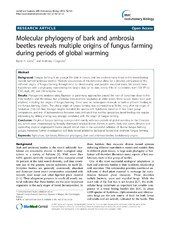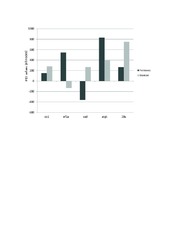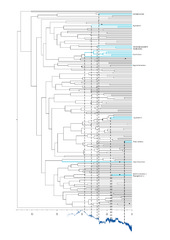| dc.description.abstract | Background: Fungus farming is an unusual life style in insects that has evolved many times in the wood boring weevils named ‘ambrosia beetles’. Multiple occurrences of this behaviour allow for a detailed comparison of the different origins of fungus farming through time, its directionality, and possible ancestral states. We tested these hypotheses with a phylogeny representing the largest data set to date, nearly 4 kb of nucleotides from COI, EF-1α, CAD, ArgK, 28S, and 200 scolytine taxa. Results: Phylogenetic analyses using Bayesian or parsimony approaches placed the root of Scolytinae close to the tribe Scolytini and Microborus, but otherwise indicated low resolution at older nodes. More recent clades were well resolved, including ten origins of fungus farming. There were no subsequent reversals to bark or phloem feeding in the fungus farming clades. The oldest origin of fungus farming was estimated near 50 Ma, long after the origin of Scolytinae (100-120 Ma). Younger origins included the species rich Xyleborini, dated to 21 Ma. Sister group comparisons and test of independence between traits indicated that neither gregarious larval feeding nor regular inbreeding by sibling mating was strongly correlated with the origin of fungus farming. Conclusion: Origins of fungus farming corresponded mainly with two periods of global warming in the Cenozoic era, which were characterised by broadly distributed tropical forests. Hence, it seems likely that warm climates and expanding tropical angiosperm forests played critical roles in the successful radiation of diverse fungus farming groups. However, further investigation will likely reveal additional biological factors that promote fungus farming. | en_US |



